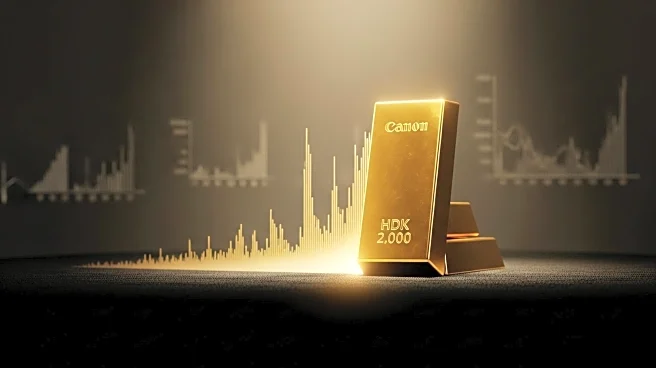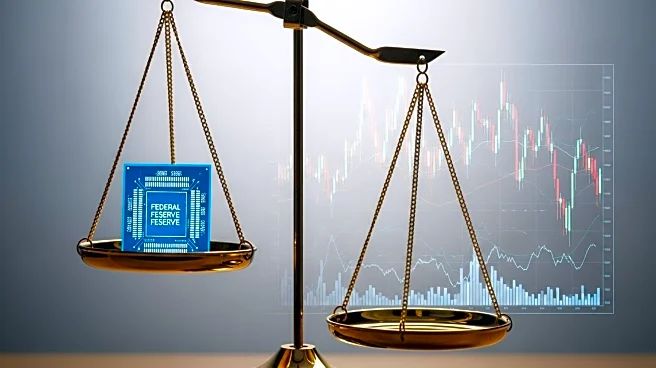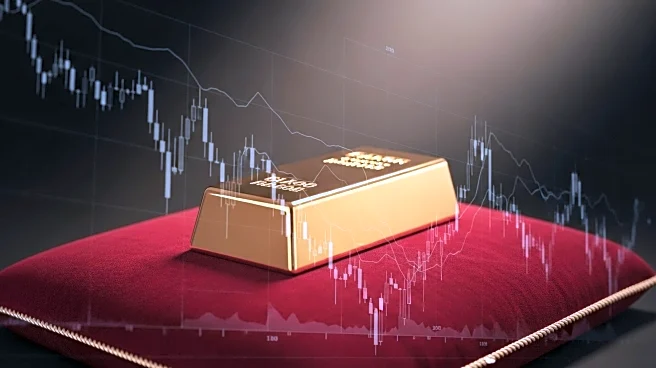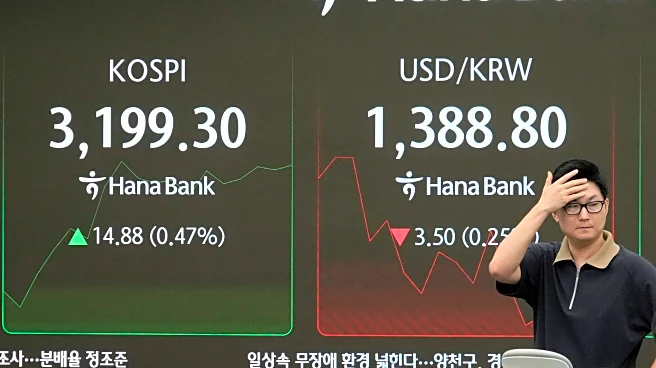What's Happening?
Gold prices have surged to near-record levels, approaching $3,600 per ounce, driven by weak U.S. jobs data that has increased expectations for Federal Reserve rate cuts. The latest data indicates a sharp slowdown in U.S. job growth and a rise in the unemployment rate to 4.3%, suggesting a softening labor market. This has led traders to anticipate a 90% chance of a 25-basis-point rate cut by the Federal Reserve, with a 10% chance of a 50-basis-point cut. The rally in gold prices is part of a broader trend, with the metal gaining 37% this year, fueled by a weaker U.S. dollar, central bank purchases, and geopolitical uncertainties.
Why It's Important?
The rise in gold prices reflects investor concerns about the U.S. economic outlook and the potential for further monetary easing by the Federal Reserve. Gold is often seen as a safe-haven asset during times of economic uncertainty, and its rising value indicates a lack of confidence in traditional financial markets. The potential rate cuts could have significant implications for the U.S. economy, affecting borrowing costs, consumer spending, and investment. Additionally, the high gold prices may impact global markets, particularly in countries like China and India, which are major consumers of the metal.
What's Next?
As the Federal Reserve considers its next moves, the focus will be on upcoming economic data and the central bank's response to the evolving economic landscape. Investors will be closely watching for any signals from the Fed regarding future rate cuts, which could further influence gold prices and broader market trends. The ongoing geopolitical tensions and economic uncertainties are likely to keep gold in the spotlight as a preferred investment option.













